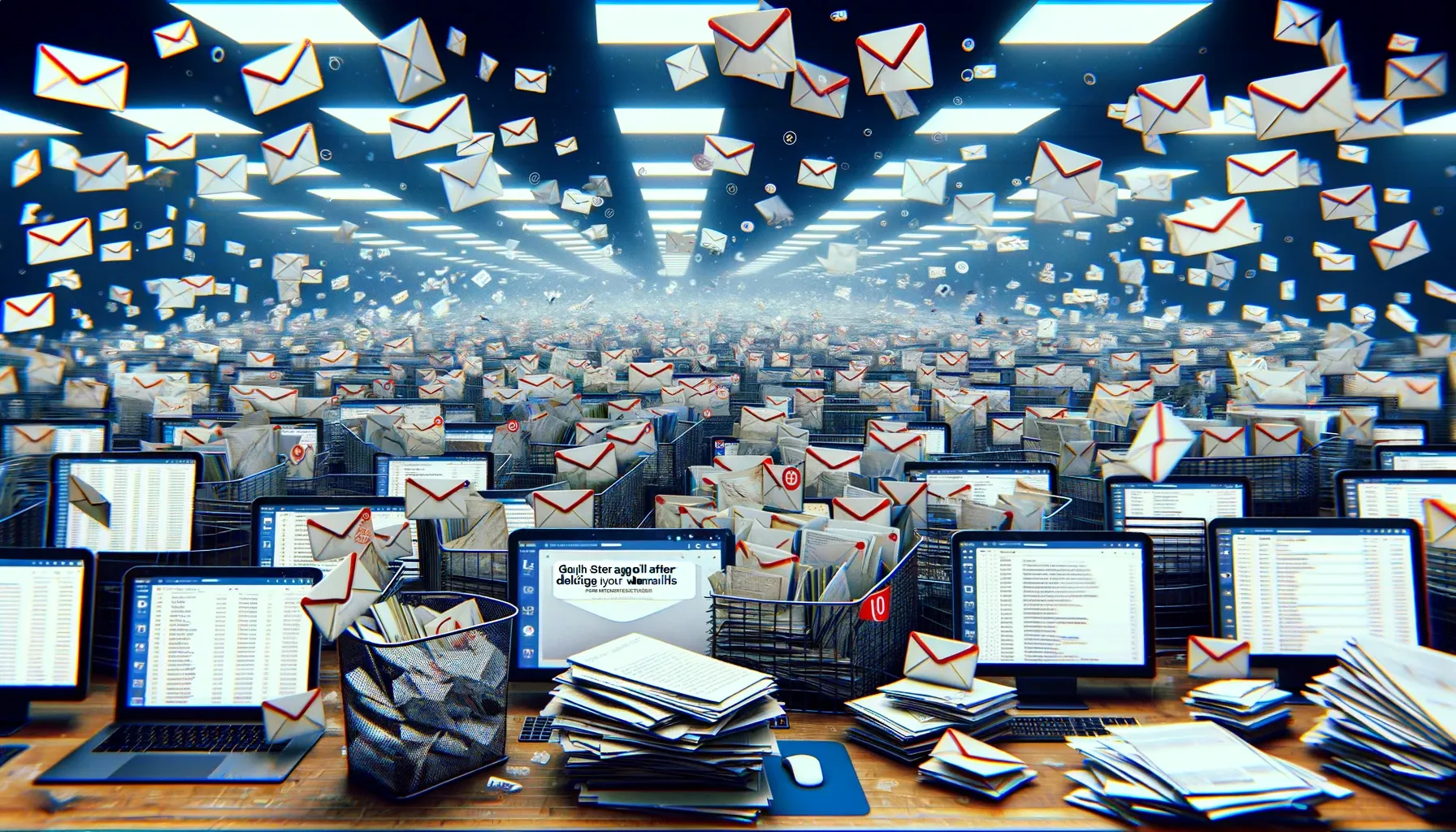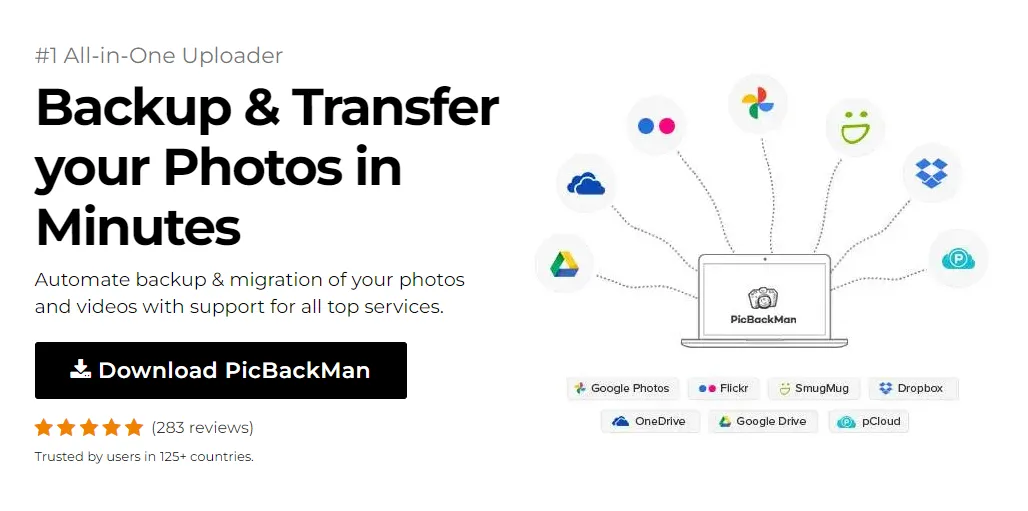
Gmail Storage Full After Deleting Emails: Optimizing Your Inbox Efficiency


Are you constantly battling with the frustration of a cluttered inbox and the dreaded "storage full" notification on Gmail, even after diligently deleting emails? Fear not, as this comprehensive guide is here to rescue you from the depths of digital chaos. In this article, we delve into effective strategies for managing your Gmail storage efficiently, even after deleting emails. From understanding the intricacies of Gmail storage allocation to implementing practical tips for optimizing your inbox, we've got you covered.
Understanding Gmail Storage Allocation
Before delving into solutions, it's crucial to grasp how Gmail allocates storage space. Gmail offers users 15 GB of free storage shared across Gmail, Google Drive, and Google Photos. This allocation encompasses all email content, including attachments, archived messages, and deleted emails. However, deleted emails continue to occupy space until permanently removed from the Trash folder. Consequently, despite deleting emails, your Gmail storage might still reach capacity due to lingering remnants.
The Impact of Deleted Emails on Storage
Deleted emails might seem like a distant memory once consigned to the Trash folder. However, these seemingly discarded messages continue to exert their presence within your Gmail storage quota. Even though Gmail automatically removes emails from the Trash after 30 days, their remnants persist in consuming valuable storage space until purged permanently.
To ascertain the extent of your Gmail storage consumption, navigate to the "Storage" section within your Google Account settings. Here, you'll gain insights into the distribution of storage across various Google services, enabling informed decisions regarding storage optimization.
Strategies for Optimizing Gmail Storage
Tired of grappling with a perpetually full Gmail storage despite your best deletion efforts? Implement the following strategies to reclaim control over your inbox and maximize storage efficiency.
Utilize Gmail's Search and Filter Functions
Harness the power of Gmail's robust search and filter functions to swiftly locate and eliminate redundant emails. By specifying search criteria such as sender, keywords, or date ranges, you can identify and delete obsolete emails en masse, freeing up valuable storage space.
Regularly Empty the Trash and Spam Folders
While Gmail automatically purges emails from the Trash after 30 days, proactive management is paramount to prevent storage congestion. Periodically empty the Trash and Spam folders to permanently expunge deleted emails, ensuring optimal storage utilization.
Archive Infrequently Accessed Emails
Instead of cluttering your inbox with seldom-referenced emails, consider archiving them to declutter your primary inbox without sacrificing accessibility. Archiving conserves storage space by relocating emails to an archived folder while retaining convenient search functionality.
Optimize Attachment Management
Attachments constitute a significant portion of Gmail storage consumption. To mitigate storage depletion, consider offloading large attachments to cloud storage platforms such as Google Drive and inserting shareable links in lieu of attachments. Additionally, periodically purge obsolete attachments to free up storage space.
Monitor and Manage Storage Usage
Stay vigilant regarding your Gmail storage usage by periodically monitoring storage allocation and identifying areas for optimization. Google's storage management tools provide valuable insights into storage distribution across various services, facilitating informed decisions to mitigate storage constraints.
Embrace Third-Party Tools and Extensions
Explore a myriad of third-party tools and browser extensions designed to augment Gmail's native functionality and streamline inbox management. From email decluttering utilities to storage optimization plugins, these tools offer innovative solutions to alleviate Gmail storage woes.
Implement Folder Organization and Labeling
Efficient inbox organization is paramount to streamline email management and optimize storage utilization. Leverage Gmail's folder organization and labeling features to categorize emails systematically, facilitating swift retrieval and decluttering.
Consider Upgrading to a Paid Plan
For users consistently bumping against the 15 GB storage limit, upgrading to a paid Google One plan offers an expanded storage allocation and additional perks such as priority support and enhanced security features. Evaluate your storage needs and consider investing in a premium plan for seamless storage scalability.
Quick Tip to ensure your videos never go missing
Videos are precious memories and all of us never want to ever lose them to hard disk crashes or missing drives. PicBackMan is the easiest and simplest way to keep your videos safely backed up in one or more online accounts. Simply Download PicBackMan (it's free!), register your account, connect to your online store and tell PicBackMan where your videos are - PicBackMan does the rest, automatically. It bulk uploads all videos and keeps looking for new ones and uploads those too. You don't have to ever touch it.
FAQs
How can I check my current Gmail storage usage?
To check your current Gmail storage usage, navigate to your Google Account settings, and locate the "Storage" section. Here, you'll find a breakdown of storage allocation across various Google services, including Gmail.
What happens to deleted emails in Gmail?
Deleted emails in Gmail are initially moved to the Trash folder, where they remain for 30 days before automatic deletion. However, deleted emails continue to occupy storage space until permanently purged from the Trash folder.
Can I increase my Gmail storage limit?
While Gmail offers 15 GB of free storage shared across various Google services, users can increase their storage limit by upgrading to a paid Google One plan. Paid plans offer expanded storage allocations tailored to individual needs.
Are there any limitations to archiving emails in Gmail?
Archiving emails in Gmail preserves them for future reference while decluttering the primary inbox. However, archived emails still contribute to storage consumption, albeit less prominently than emails in the primary inbox.
How often should I empty the Trash and Spam folders in Gmail?
It's advisable to empty the Trash and Spam folders in Gmail periodically to prevent storage congestion. While Gmail automatically removes emails from the Trash after 30 days, proactive management ensures efficient storage utilization.
What are some alternative solutions for managing Gmail storage?
In addition to the aforementioned strategies, users can explore alternative solutions such as email decluttering utilities, storage optimization plugins, and email client integrations to streamline inbox management and optimize storage utilization.
Conclusion
In conclusion, navigating the intricacies of Gmail storage management can be daunting, especially when confronted with persistent storage constraints despite deleting emails. However, by implementing the aforementioned strategies, you can regain control over your inbox, optimize storage utilization, and prevent future storage issues. From leveraging Gmail's search and filter functions to embracing third-party tools, proactive management is key to maintaining an efficient and clutter-free inbox.
Backup & Transfer your Photos in Minutes
Automate backup & migration of your photos & videos with support for all top services.
Trusted by users in 125+ countries.










